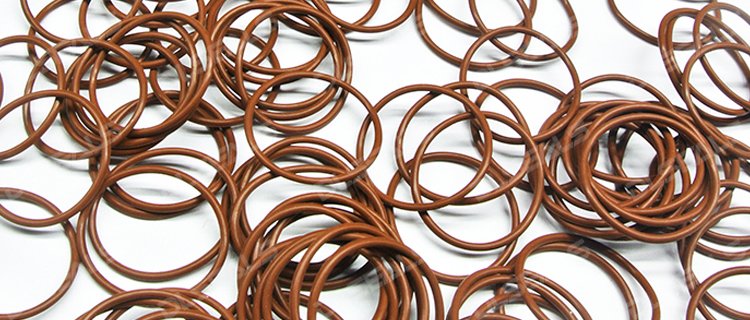
In sealing technology, the material selection of the sealing ring is crucial to the performance and life of the equipment. Fluororubber and nitrile rubber are two common sealing materials, each of which has unique oil resistance. This article will analyze the oil resistance of fluororubber seals and nitrile rubber seals in detail to help make a more informed choice in practical applications.
1. Oil resistance of fluororubber seals
Fluororubber (FKM), such as the common brand Viton, is a high-performance synthetic rubber with remarkable properties including excellent high temperature resistance, chemical corrosion resistance and oil resistance. Fluororubber seals excel in oil resistance and can withstand many types of oils, including mineral oils, synthetic oils, fuels and lubricants. This is because the fluorine element of fluororubber forms a strong chemical bond in the chemical structure, giving it excellent resistance to chemical corrosion.
The oil resistance of fluororubber seals makes them very suitable for applications such as aerospace, automotive and industrial equipment that require high-performance sealing. Although the price of fluororubber seals is relatively high, their superior performance and long service life make them the first choice in many harsh environments.
2. Oil resistance of nitrile rubber seals
Nitrile rubber (NBR) is another commonly used sealing material, and its main feature is its excellent oil resistance. Nitrile rubber seals can effectively resist a variety of oil liquids, including mineral oil, lubricating oil and fuel. Nitrile rubber has good tolerance to grease and fuel by introducing cyanide groups in its molecular chain.
The advantages of nitrile rubber seals are low cost, good processability and good wear resistance. It is widely used in automobiles, mechanical equipment and various industrial fields. Although nitrile rubber has excellent oil resistance, its performance may be affected under high temperature and strong chemical environment.
3. Performance comparison
High temperature resistance: Fluororubber seals have significantly better high temperature resistance than nitrile rubber. Fluororubber can maintain stable performance at temperatures up to 200°C or even higher, while the temperature resistance range of nitrile rubber is generally -40°C to +100°C. In environments where high temperature operation is required, fluororubber is a more suitable choice.
Chemical resistance: Fluororubber performs better in chemical resistance and can withstand a wider range of chemicals and solvents, while NBR may degrade when exposed to some strong acids, bases or solvents.
Oil resistance: Both perform well in oil resistance, but FKM’s oil resistance is more stable under high temperature and extreme conditions. NBR has strong tolerance to oils at room temperature, but its oil resistance may decrease under extreme conditions.
Cost factor: The cost of NBR is usually lower than that of FKM, which makes it advantageous in cost-sensitive applications. Although FKM is more expensive, its superior performance and long life can make up for the cost gap in some applications.
4. Summary
When choosing FKM seals and NBR seals, the specific requirements of the application environment should be considered comprehensively. FKM is suitable for applications with high temperature, strong corrosion and high performance requirements, while NBR is suitable for applications with high requirements for oil tolerance but cost sensitivity at room temperature. By comparing the oil resistance of the two, users can make the most appropriate choice in actual applications to ensure efficient operation and long-term stability of the sealing system.
Post time: Aug-17-2024
